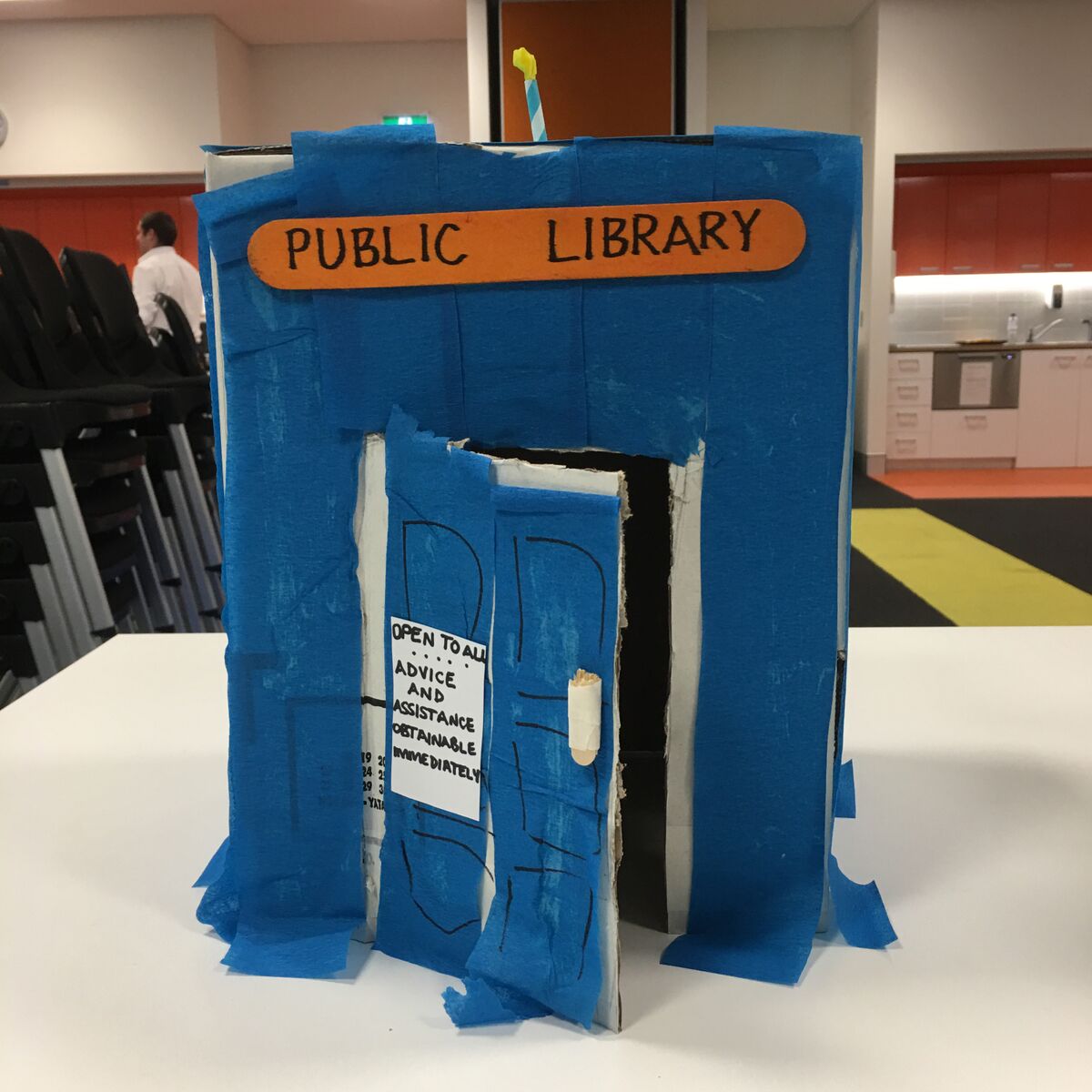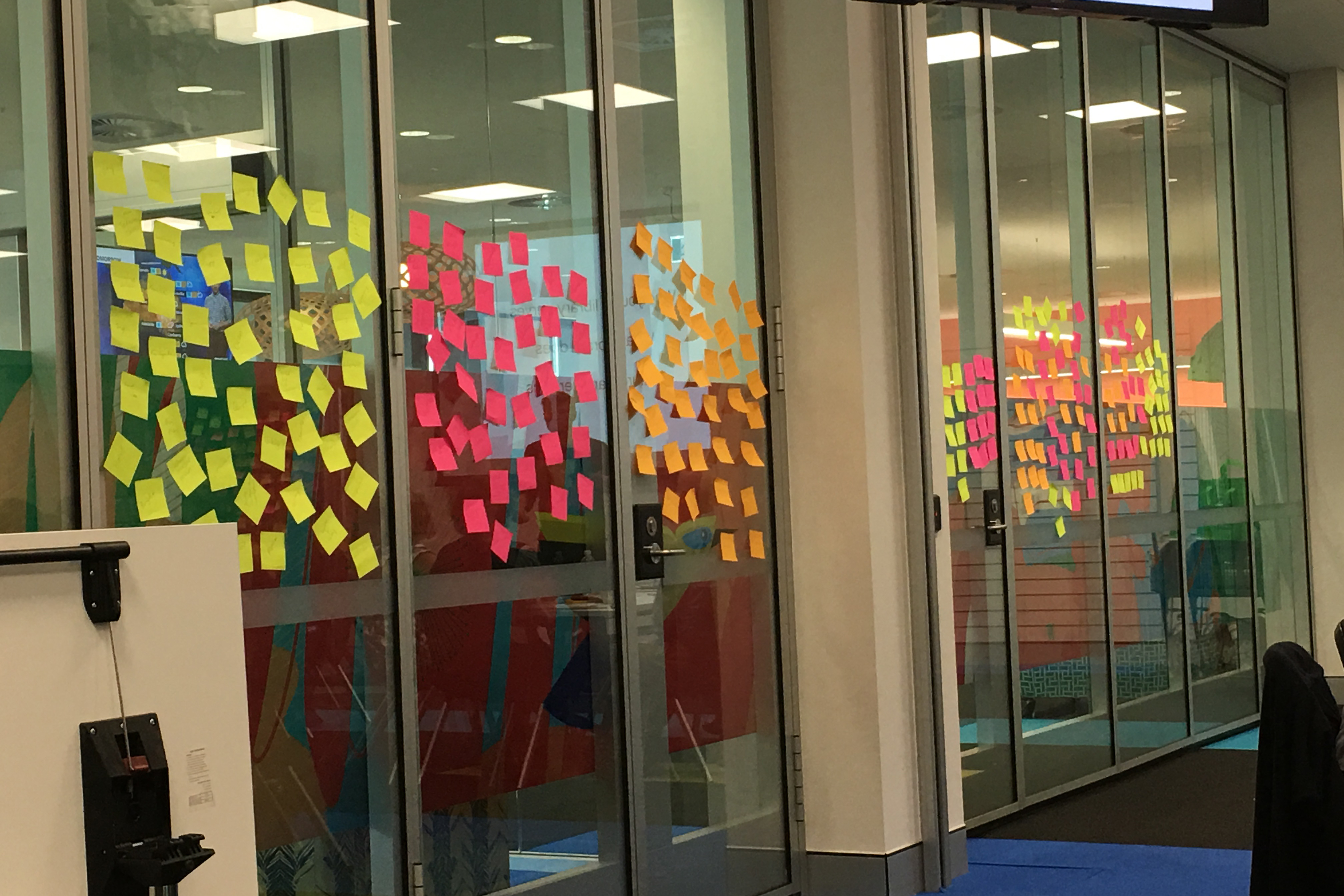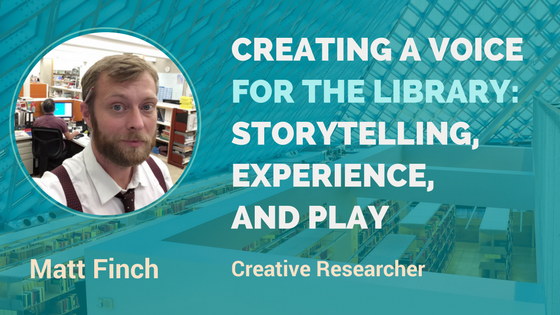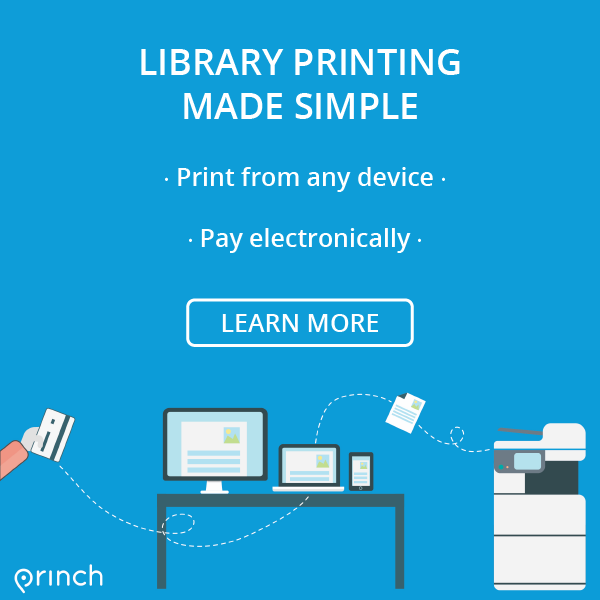Community engagement is an important aspect of libraries’ success in the 21st century.
To share some hands-on tips with you, we’ve had a chat with Matt Finch, a creative researcher working with libraries in Australia, New Zealand, Britain, and the USA to help them use storytelling with the community when creating a voice for the library.
1. Can you tell us a bit about yourself and the roles you took in your work with public libraries?
I write and make fun things for people to do in public places, but essentially, I’m a catalyst: I reduce the energy required for reactions to happen in organizations and communities of all kinds. Together we surface new ideas, build internal & external relationships, and deliver compelling, sustained community engagement.
Together we surface new ideas, build relationships, and deliver sustained #community engagement. Share on XIn public libraries, I’ve worked with a range of institutions to develop new ways of engaging the community – from local stories on coffee cups to a citywide burlesque festival, live zombie battles, time travel roleplay in the US, New Zealand, and Australia, as well as other approaches such as the Fun Palaces art-and-science movement.
2. How do you help libraries tell a story about who they are?
Storytelling is all about listening – paying close attention to each institution and its community while also asking provocative questions. You must be sensitive to those details which are the most unique and compelling. My process is close to what the writer Linn Ullmann calls “artistic listening”.
“It’s a form of artistic listening, of understanding the consequences of the decisions you’ve made. If you are lucky enough to find a voice and place, there are real consequences to those choices. Together, they limit the possibilities of what can come next—which help point the way forward. Your role, then, is to not stick to your original idea—it is to be totally faithless to your idea. Instead, be faithful to your voice and place as you discover them, as well as to the consequences of what they entail.”
In a library context, that means capturing the initial spark of inspiration, then allowing that spark to guide you, instead of trying to corral or direct it.
Storytelling in a #library means capturing the initial spark of inspiration. @DrMattFinch Share on XFor example, starting with the word “Zombies!” and then thinking what it means to allow teens to play in the world of a zombie battle – guided not by your preconceptions or goals, but what they might want to do to steer the story of that battle for themselves.
Or a great library worker like Queensland’s Jacinta Sutton pondering how to bring old collections to life and hitting on the idea of a Faceswap app that lets you put yourself into historic digitized images.

Photo by Matt Finch
3. Do libraries need to reinvent themselves?
Libraries don’t need “reinventing” per se. I’m fascinated by the idea of the library as a place which lets you step inside a story, a world of fiction or non-fiction, and then participate in that world as you choose.
I'm fascinated by the idea of the #library as a place which lets you step inside a #story, and then participate in that world as you choose. Share on XThat means creating physical and digital spaces which are safe and well-designed, but also non-prescriptive: sandboxes, where visitors can shape what happens, even if it leads you into unpredictable circumstances.
Libraries were always about this kind of exploration and unpredictability; even old-school librarians weren’t teachers or preachers, they let you choose and read and interpret each book for yourself!
Public libraries are unlikely to develop Star Trek-style holodecks, but they are getting good at letting users determine their own experiences and letting communities decide what they want for themselves. That’s a low-fi precursor to the holodeck in my book.
The great challenge is whether 21st century librarians can make themselves comfortable in that uncertain space where the community, not the library, steers an experience.
The great challenge is whether #librarians can make themselves comfortable in the uncertain space where the #community, not the #library, steers an experience. Share on X4. Can you tell us more about your view of the library as a creative space and the opportunities that come with a Creative-in-Residence program?
The Creative in Residence program was a unique opportunity to range across a large and ambitious knowledge institution, working alongside many teams, spotting opportunities for innovation and change, and helping people to turn bright ideas into real projects with practical results and long-term potential.
I was blessed to be offered that role by Queensland’s Jane Cowell, but I would love to see such residencies in more institutions worldwide – and I’d like to see a wider diversity of people being offered such opportunities as well.
Innovation through listening and relationship-building is such a personal process that the experiences and perspectives you bring to the role matter very much; I have no doubt that we need a much more diverse group of people stepping into such residencies.

Photo by Matt Finch
As for the library as a creative space… The library as a concept has always been pretty open ended and user-centric, even if institutions don’t always live up to those ideals, as Tegan Darnell points out.
I’d love to see that open-endedness translated into the realm of experience and events, something which tallies with the game design work of Raph Koster. We should create experiences which are revelatory, unpredictable, transformational for participants, and which force us to question our assumptions.
We should create #experiences which are revelatory, transformational for participants. Share on XOpen-ended play-based scenarios like our Library Island are still fairly new. Getting people comfortable with playful and unpredictable activities can be challenging; participants have to be ready for frustrations and languor as well as the surges of intensity when it can feel almost fully out of control!
This kind of experiences – the social scientist Kate Davis calls them Information Experiences – apply as much to the realm of social media, patient-centered healthcare, or community organizing as they do when visiting a public library. It’s all a question of who you let call the shots; whether you direct people or collaborate and allow them to surprise you.
5. What were the key learnings after deploying the program?
We tested and developed many successful projects over my two-year stint in Queensland, but for me, the greatest discovery was realizing how awesome conservation librarians are. They have an incredible range of scientific and artistic skills which they use to preserve our heritage for generations to come. They are future-focused and they even design their repairs to be reversible in case new technology comes along. No one is more focused on the future than a conservation team.
Their work also made me realize that there’s really no distinction between programming and collections. Collections are maintained through ceaseless conservation activity; programming creates enduring memories and legacies for communities.
You see this clearly when a photographic conservator like Australia’s Kelly Leahey chooses to share her skills outside the conservation studio and helps people make cyanotype art at a community event.
As for what people learned from my experience and skillset? My role is not to own or direct the innovation, but to inspire, provoke, and catalyze.
When I worked with Ann Arbor District Library for ten days, they referred to it as “an inclusive, much-loved inflection point in our organization’s growth, and we’ll be talking about what we learned this week for years to come.”
But those years to come are the responsibility and the glory of the incredibly cool staff at Ann Arbor; my privilege and joy was to create the conditions to spark their own on-going inspiration.

Photo by Matt Finch
6. What is your plan for the future? What projects do you want to work on?
I’m consulting and training with a range of bodies internationally; In February, Library Island is appearing at the ALA Symposium on the Future of Libraries.
I love creating useful and meaningful stories for institutions of all kinds and developing immersive activities.
I love creating useful and meaningful #stories for #institutions and developing immersive activities. #librarians Share on XHope you have enjoyed our talk with Matt Finch. To find out more about his work, visit his site Mechanical Dolphin.
We will be back next week with another interesting article!
Recent posts
Enhancing User Experience For Libraries In The Digital Age
In this week's Princh Library Blog post, recurring guest writer Sam L. Bowman covers how your library can improve the user experience on [...]
Library Password Practices—Balancing Accessibility and Security
In this week's Princh Library Blog, recurring guest writer Nina Grant discusses a basic, but nevertheless crucial digital security principle: secure password [...]




Leave A Comment